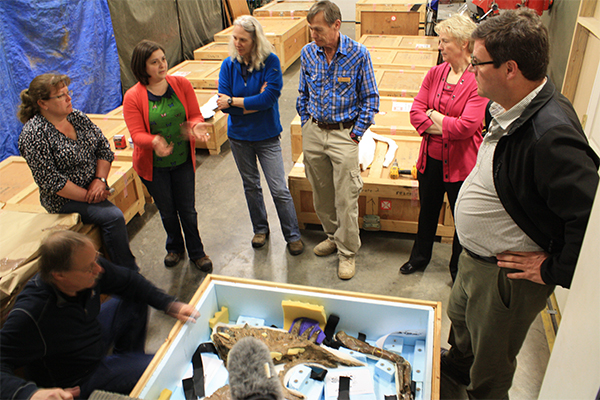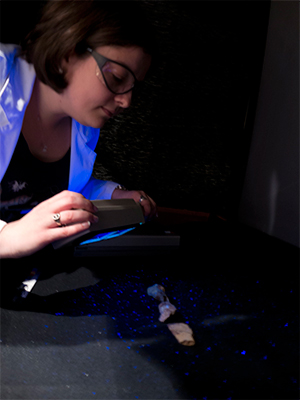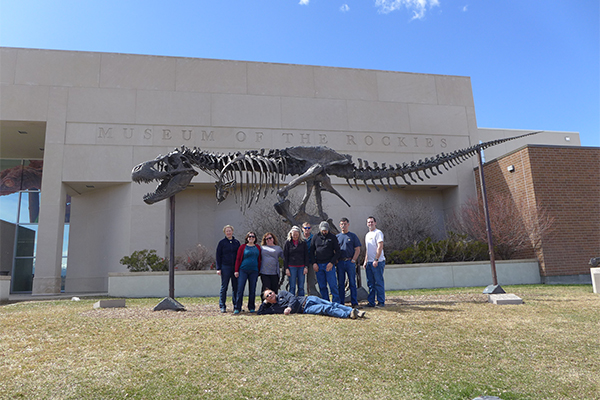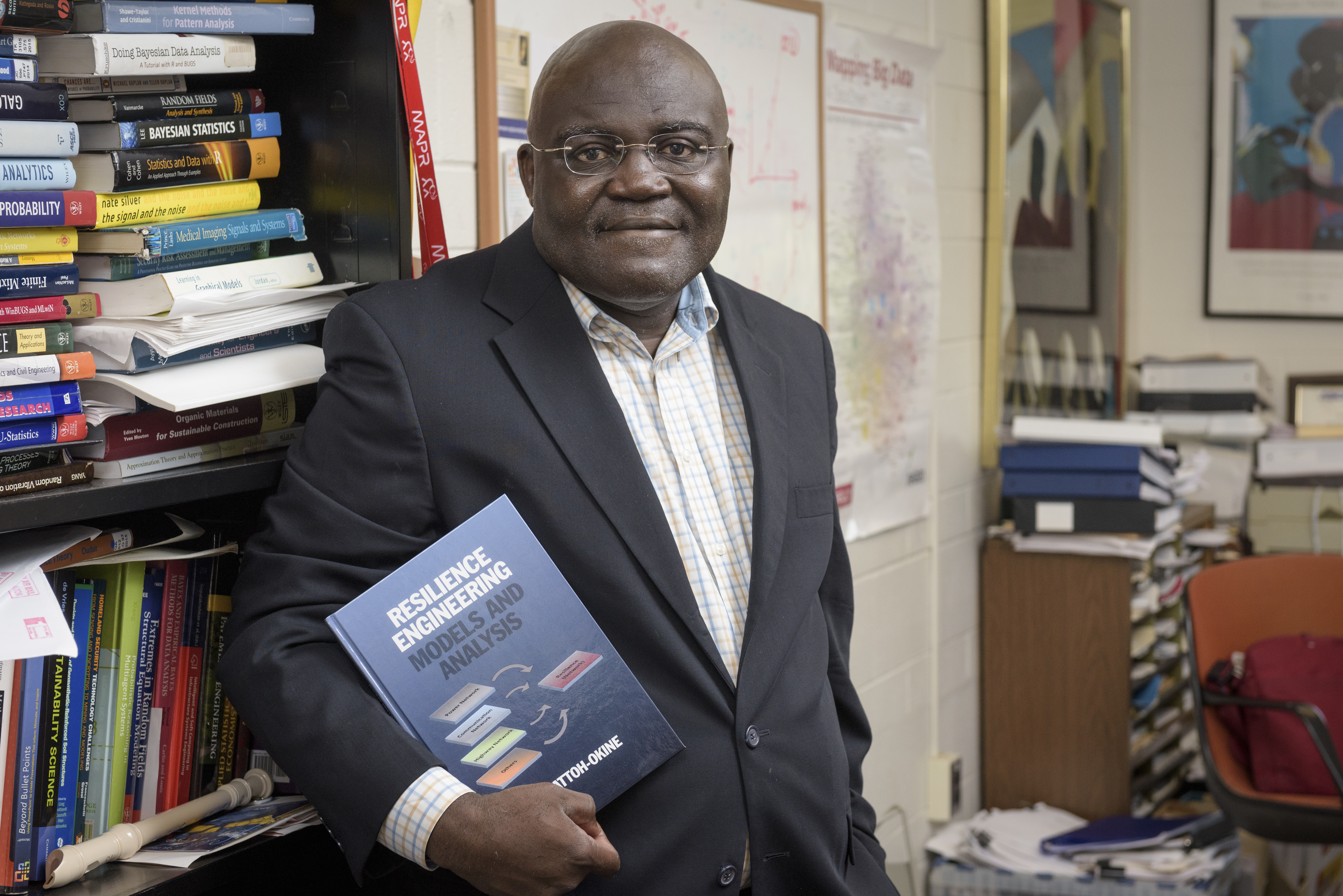


'Mr. T. rex goes to Washington'
UD art conservation fellow contributes to preparation, transport of fossilized dinosaur bones
1:41 p.m., May 6, 2014--Think of art conservation and you probably picture restoration experts working on paintings, textiles, photographs, furniture, decorative objects, and other cultural artifacts.
Dinosaur bones? Not so much.
People Stories
'Resilience Engineering'
Reviresco June run
But to Becky Kaczkowski, a third-year graduate fellow in the Winterthur/University of Delaware Program in Art Conservation, handling art objects has led directly to handling natural history artifacts, and she was recently part of a team that oversaw the preparation and shipment of a Tyrannosaurus rex skeleton from Montana to Washington, D.C.
Found on government land in 1988 by rancher Kathy Wankel, the bones spent almost 25 years at the Museum of the Rockies in Bozeman. Recently, however, the U. S. Army Corps of Engineers agreed to a 50-year loan of the skeleton to the Smithsonian, where it will be the centerpiece of a new dinosaur exhibit, scheduled to open in 2019 in the National Museum of Natural History (NMNH).
The T. rex needed a lot of suitcases for his 2,000-mile-trip east — 16 carefully marked and super-carefully packed crates, to be exact. And, not surprisingly, the trip, which took four days in a specially marked, climate-controlled FedEx truck, drew a lot of attention.
The truck arrived at the NMNH early on April 15, and by 5:30 that evening, the story had been featured in more than 250 news outlets. According to NMNH director of public affairs Randall Kremer, social media coverage was “astonishing, if not unprecedented, for a Smithsonian story” — as of 6 p.m., 1,598 #nationstrex tweets had garnered more than 33 million impressions.
“The media coverage was staggering,” says Kaczkowski. “It was kind of shocking for me to find myself working in front of the media, especially as I was just getting used to working with a new team of people.”
“But it was great to have that experience early in my career,” she adds. “This was an amazing opportunity to work on a large-scale project with a huge team involving three organizations. The project was the culmination of everything I had learned in my education up to this point, and I was able to apply a lot of the concepts and best practices that I had been trained in but hadn’t yet used in a real-world environment.”
Kaczkowski, who will complete her master of science degree in art conservation at UD in August, has already accepted a post-graduate position at the NMNH, where she will conduct research on the use of laser and ultrasound techniques in the conservation of fossil materials.
“The field of art conservation is small,” Kaczkowski says, “and I’m entering an even smaller subspecialty of that field by focusing on the natural sciences. But the UD program does a fantastic job of preparing students to work in the field — whether we’re interested in 300-year-old Dutch paintings or 66-million-year-old fossils, they encourage us to follow our passions.”
For now, Kaczkowski is still basking in the excitement of having been involved in a nationally important conservation project.
“The Wankel T-Rex is really owned by the American people because it was discovered on public land,” she says. “Helping to bring it to the Smithsonian, which attracts some eight million visitors a year, was beyond exciting for me.”
Kaczkowski can also bask in the praise of NMNH director, Kirk Johnson, who sent the entire team an email after the dinosaur’s safe arrival in the nation’s capital:
Today was nothing short of miraculous. Not in my wildest dreams could I ever have imagined what went down today. We will reap accolades for months due to your handiwork and ample preparation. This was a very proud day for our museum and I am so happy to share it with you. Absolutely splendid job.
To learn more about Kaczkowski’s experience on the T. rex project, read her blog entry.
Article by Diane Kukich
Photos courtesy of Kelly Carnes, Evan Cooney and Hilary-Morgan Watt, all Smithsonian Institution










